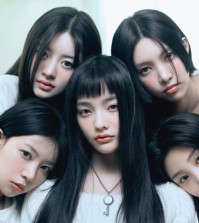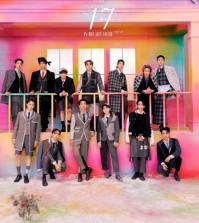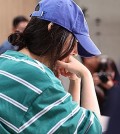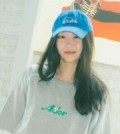- California Assembly OKs highest minimum wage in nation
- S. Korea unveils first graphic cigarette warnings
- US joins with South Korea, Japan in bid to deter North Korea
- LPGA golfer Chun In-gee finally back in action
- S. Korea won’t be top seed in final World Cup qualification round
- US men’s soccer misses 2nd straight Olympics
- US back on track in qualifying with 4-0 win over Guatemala
- High-intensity workout injuries spawn cottage industry
- CDC expands range of Zika mosquitoes into parts of Northeast
- Who knew? ‘The Walking Dead’ is helping families connect
National Museum of Korea director talks LACMA’s ‘Treasures of Korea’ exhibition
Kim Youngna says “Many people come to museums to verify what they have already learned, but the important thing is not verification but adventure and learning.”
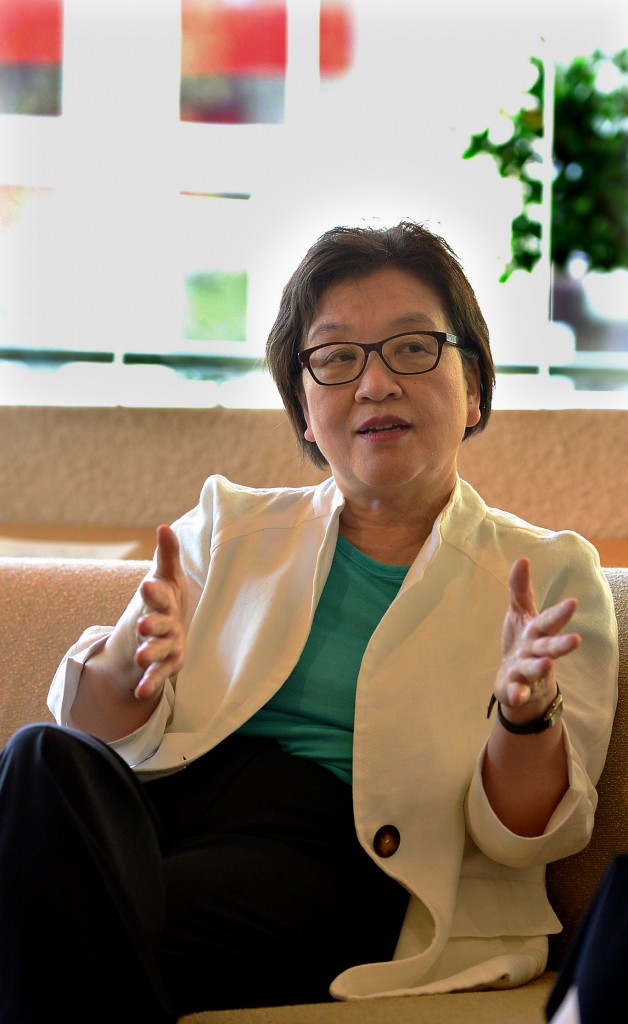
National Museum of Korea Director Kim Young-na discusses LACMA’s “Treasures from Korea” with The Korea Times. (Kim Young-jae / The Korea Times)
Kim Youngna, the 63-year-old director of the National Museum of Korea, sat down with The Korea Times to discuss LACMA’s upcoming exhibit, “Treasures from Korea: Arts and Culture of the Joseon Dynasty, 1392-1910.”
The NMK loaned about 150 pieces, some of them national treasures, for the show, which spans 518 years of Korean history.
Q: What are your thoughts on opening an exhibit of the Joseon dynasty’s art at LACMA, and what are your expectations?
Kim: “Art Across America,” which spanned 300 years of American history, showed in Korea last year. That was a part of an exchange we did with LACMA, the Philadelphia Museum of Art and the Museum of Fine Arts in Houston, so the exhibit will open in all three museums. But L.A. is the biggest one, and because LACMA has been a pillar of Korean art outside of Korea, I feel this will be the most important one.
Q: You opened an American art exhibit at the National Museum of Korea?
Kim: The idea that the NMK only shows ancient art is in the past. The museum’s status and contents changed dramatically since its move to Yong-san in 2005. We’re the seventh largest museum in the world and average more than 3 million visitors a year, which means we now linger around the top 10 museums in the world.
We don’t show just Korean artwork but also those from around the world. Currently, we have an exhibit showing from the Musee d’Orsay and have shown artwork from Islam, Turkey and Africa.
In order to deal with the changing flow of globalization, we need to understand and accept a variety of cultures. We also do many foreign exhibitions and try to provide opportunities for people to see our art from within their own countries.
Q: Displays are an important part of exhibitions. Do you like what they’ve done here? We’re curious as to whether the display designs were done by NMK or by LACMA.
Kim: NMK determined the objects and themes, and experts from both museums decided the display design and the flow of the exhibition. Every museum space is different, and I think they did a good job showing the characteristics of each.
An NMK curator worked with the exhibition for 18 days to make sure of the safety and transportation of the national treasures and to make a display that will properly introduce Korean art.
Q: Is there a particular observation point that will help us better experience the exhibit?
Kim: The exhibition is less of an art exhibit and more of a culture exhibit. Because it’s more complicated than a simple show of pictures, it may be difficult to take in the royal culture, society, Buddhism and process of modernization on display.
The important thing about seeing an exhibit you don’t know much about is to make yourself familiar with it by not feeling overwhelmed. Get an overall sense of feeling the first time, and the next time after that, appreciate each and every piece individually.
Many people come to museums to verify what they have already learned, but the important thing is not verification but adventure and learning. I hope people feel the joy and charm of discovering something new in the exhibit.
Q: What is a standout characteristic of Joseon art?
Kim: It’s restrained and humble but refined. Even in ceramics, Joseon porcelains show a simple beauty influenced by Confucianism that is not found in Goryo celadons.
While Western art is eye-catching, our art has the charm of a depth that comes inch by inch, one that draws you in.
Q: Tell us about your personal favorite piece.
Kim: I also love it, but it’s a piece that Director Michael Govan specifically requested: the Bottle with Rope Design from the 16th century. It’s a piece that isn’t one of the national treasures, but it’s a jar that expresses the beauty of our porcelain well and one that has a very modern sense to it.
Q: How should parents guide their second-generation children around the exhibit?
Kim: When I think about my childhood, I don’t have memories of my father (NMK Director Kim Jae-won) taking me around to explain pieces to me. Still, I think I ended up working with museums not because it was taught to me but because I became so used to going to them.
Even if your children don’t find it fun, leave them alone and don’t try to teach it to them. It’s important for them to find interest in it after remembering that they saw it with their mothers at a later time.
Q: Since last year, Korean art exhibitions in big U.S. cities like San Francisco and New York City have been shown. I hear some people in Korea are opposed to exhibiting Korean national treasures abroad.
Kim: The reason for that opposition comes from concern of damage to the pieces. But these days, the preservation and transportation of artwork is a science. They’re not treated like items you wrap when you’re moving.
What museum would send a piece away if there was even the slightest chance of damage to one of its items? If you think like that, it becomes impossible to have good exhibits.
Think about the art we receive from other countries in exchange for what we give them. Good exhibitions come out of exchanges between museums in different countries.
Q: What efforts are being made to recover Korean cultural artwork currently scattered all over the world?
Kim: The Overseas Korean Cultural Heritage Foundation was started two years ago, and it is working hard to recover our lost cultural artwork from foreign countries. Experts say there are about 140,000 items scattered around the world, and about 60,000 are in Japan.
The problem is that some of them were taken lawfully and some of them were stolen, but those processes were vague and the investigations are difficult.
Q: If you’d like to say a word to overseas Koreans who own some of those cultural assets?
Kim: There must be many people who own good cultural assets. I want to suggest to them to donate their items not just to NMK but also to LACMA. It’s important to help overseas museums like LACMA grow their Korean art collections.
Research of Korean art overseas needs to happen, but because of the lack of pieces, it’s difficult for Korean art majors and curators to emerge. Currently, many Chinese and Japanese art experts are also curating Korean art in museums around the world. If it keeps up, it’s only natural that interest in Korean art will fall short.
Q: Please say a word to Koreans in L.A. as the director of the representative museum in Korea.
Kim: The people living here need to feel love toward the Korean art collection at LACMA. In Houston, the Koreans are gathering together to passionately support a Korean art gallery. The same thing is happening in Philadelphia. I hope here, too, a group forms to support LACMA’s Korea gallery. I feel LACMA would also give more attention to its Korean collection if a lot of Koreans visit and show interest.
“Treasures from Korea,” sponsored by The Korea Times, opens to the public on Sunday on the second level of the Hammer Building and runs through Sept. 28.







